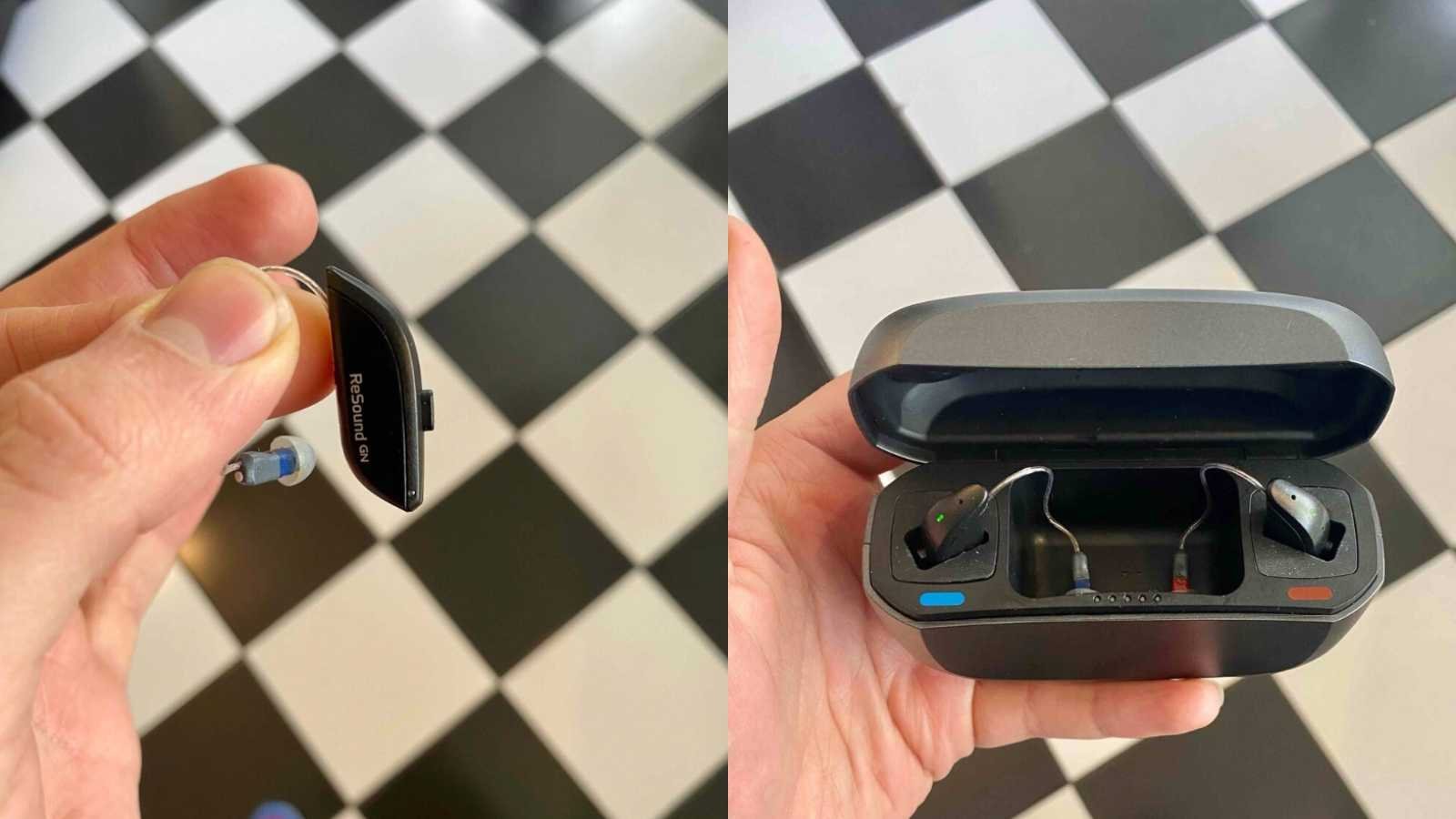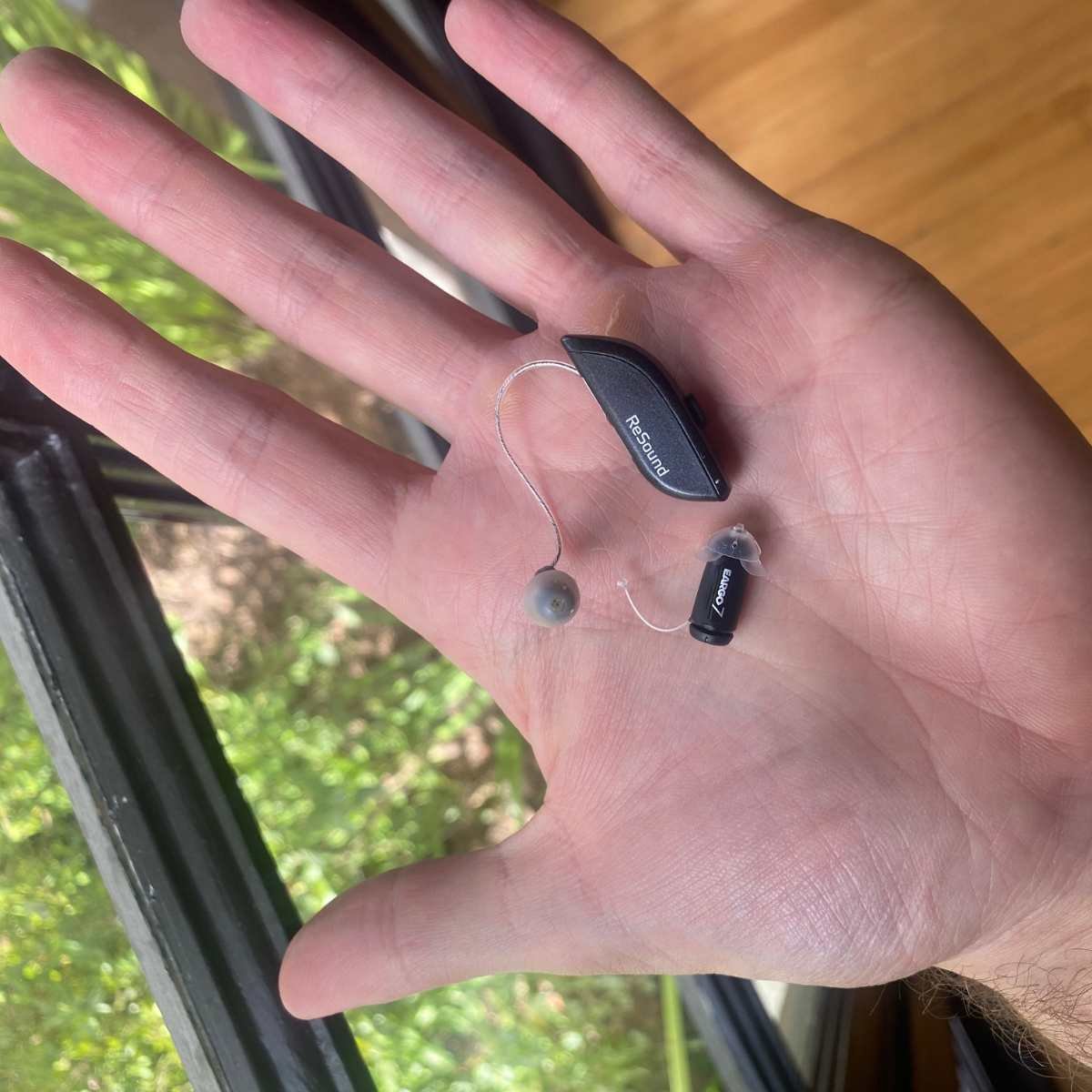If you've done much research about hearing aids, you've probably seen the line that "hearing aids aren't like glasses." You can't just put them on and expect everything to be fixed.
I put on my first pair of hearing aids about three years ago, and after an initial moment of awe that I could hear the refrigerator and the sound of my wife's voice in the backyard, I stepped out front to take a walk.
A few seconds later, I ducked as a helicopter flew overhead (I live in Los Angeles). I was sure the aircraft couldn't be more than 100 feet from me, but it was just a distant shape when I looked up into the sky.
I quickly reached for my phone and turned down the volume, but still, the sounds of the world around me felt incredibly loud.
Scroll through TikTok, Instagram, or YouTube, and you'll see the same account repeatedly. Wearing hearing aids for the first time can be a bit shocking.
Don't get me wrong! I also got immediate benefits.
On subsequent walks around my neighborhood I suddenly had the confidence to talk to my neighbors even when they were wearing masks (this was during the pandemic).
I could hear the sound of my wife's voice even when she got quiet later at night, and I could turn the TV volume down to a normal level.
Ultimately I tried a few different hearing aids before I landed on the pair that I still wear today, but I learned a few things in those first months as a hearing aid wearer.
Four lessons from my hearing aid adjustment period.

1. Be kind to yourself.
Wearing hearing aids is an important investment in your own health, and can unlock the ability to engage in conversations and re-enter the communication world. That doesn't mean that it's easy.
If you feel frustrated or uncomfortable, take your hearing aids out for a little while and give yourself a break. Many audiologists recommend that you build up your hearing aid wear time slowly. Start with an hour, then two, then three.
I found the most success using my hearing aids in the most challenging listening situations, like when people's voices got softer at night or at doctors' appointments.
The fact that I was getting some apparent benefit in those situations made the early weeks of discomfort feel worth it. I took my hearing aids out often when I was home or in easy-to-hear conversations.
2. Don't be afraid to turn your hearing aids down.
Hearing providers often program hearing aids for your prescriptive targets, which isn't wrong, but it does mean that your brain will be hearing sounds at a volume they haven't heard for decades, or maybe ever.
I found that turning my hearing aid volume down substantially, gave me a more comfortable starting experience. Over time, I naturally started to turn the volume until I reached the prescriptive target.
3. Attend your follow-up appointments and ask for adjustments.
Be vocal about what's frustrating you and what isn't working. Not every problem will be solvable, but you're hearing care. Professionals have many tools at their disposal, and they might be able to do something that you aren't aware of.
If you're feeling especially uncomfortable early in your hearing aid-wearing experience, you can even ask your hearing professional to manually reprogram your hearing aids for less amplification. They can work your amplification back up over time. While this process might seem tedious, it's a far better outcome than your hearing aids living in the top drawer.
4. Be proactive in the 45-60 days of your hearing aid trial period.
You'll want to feel confident that you were experiencing at least some adjustment and benefit by the 45-day marker.
If you remain completely uncomfortable and cannot increase your wear time significantly, devices might not be the right fit for you, and you might need to look for an alternative.
If you are able to make that decision within the first 45 days or so, you will have a lot more options.
Said another way, trust the process…as long as it's still before day 45.
5. Involve other people in your process.
It's difficult for those who do not wear hearing aids to understand what the experience of wearing hearing aids for the first time feels like. Do your best to describe your feelings and explain what you need from people around you.
You might ask people to reduce the volume on background noise elements like fans or music until your brain adjusts. Take time to think about how your hearing aids are helping you and the ways that are making things harder for you. Communicate this to the people you love so they understand the complexity of the onboarding process and don't think of your hearing aids as just a one-size-fits-all solution. Ultimately you and your loved ones will become accustomed to your hearing aids, and her limitations for the first over communication is important.
If your partner or loved one is willing, you can offer to let them try your hearing aids on for a few moments so they get a sense of what you're hearing.
What do hearing aids sound like for the first time?
.jpg)
The most obvious answer is that they sound louder than you're probably used to. Many hearing aid wearers notice sounds like your hands rubbing against your clothes, papers shuffling, water running, and appliances in the background.
People also notice pleasant things like birds singing and the sounds of distant conversation at a park.
In general, hearing aids are built to optimize for speech clarity which means most of them over-index on high-frequency sounds.
Hearing aids often sound crisp, sharp, or tinny. Over time your brain will adjust, and ultimately the sound of hearing aids in your ears will sound just like the rest of what you hear.
Ultimately, our ears are just a path to send electrical signals to our brains. Once the brain re-codes, what each sound should correlate to in the brain, it can rebalance the "naturalness "of sound..
Will you need a hearing aid adjustment each time you change devices?
Some hearing aid wearers report that they become used to a specific brand or device, and it takes them some time to get used to a new one. This is especially true if someone has been with a particular brand for decades. For this reason, I wouldn't suggest switching it up for no reason.
The most significant brain adjustment happens at the beginning of your hearing aid-wearing journey. Switching between brands or products should be much more minor and take less time to become accustomed to.
Do you need to wear my hearing aids all day?
As a general rule, wearing hearing aids for at least a few hours per day is a good idea to keep your brain adjusted and familiar with the sound that they produce.
If you ask many audiologists how much you should wear your hearing aids, they will tell you as much as possible. My opinion differs a bit. I think of my hearing aids as a tool. Yes, I want to wear them enough to keep my brain used to their sound, but I also don't want to feel tethered to them.
I often take my hearing aids out when I don't need them, and I enjoy the slightly quieter and more natural sound of my open ear. When I go to a meeting or interact with friends and family, I'll put my hearing aids back in. That works for me.
Whether you are trying hearing aids for the first time or getting used to a new pair, I hope this has been helpful. If you have questions feel free to reach out at [email protected]






